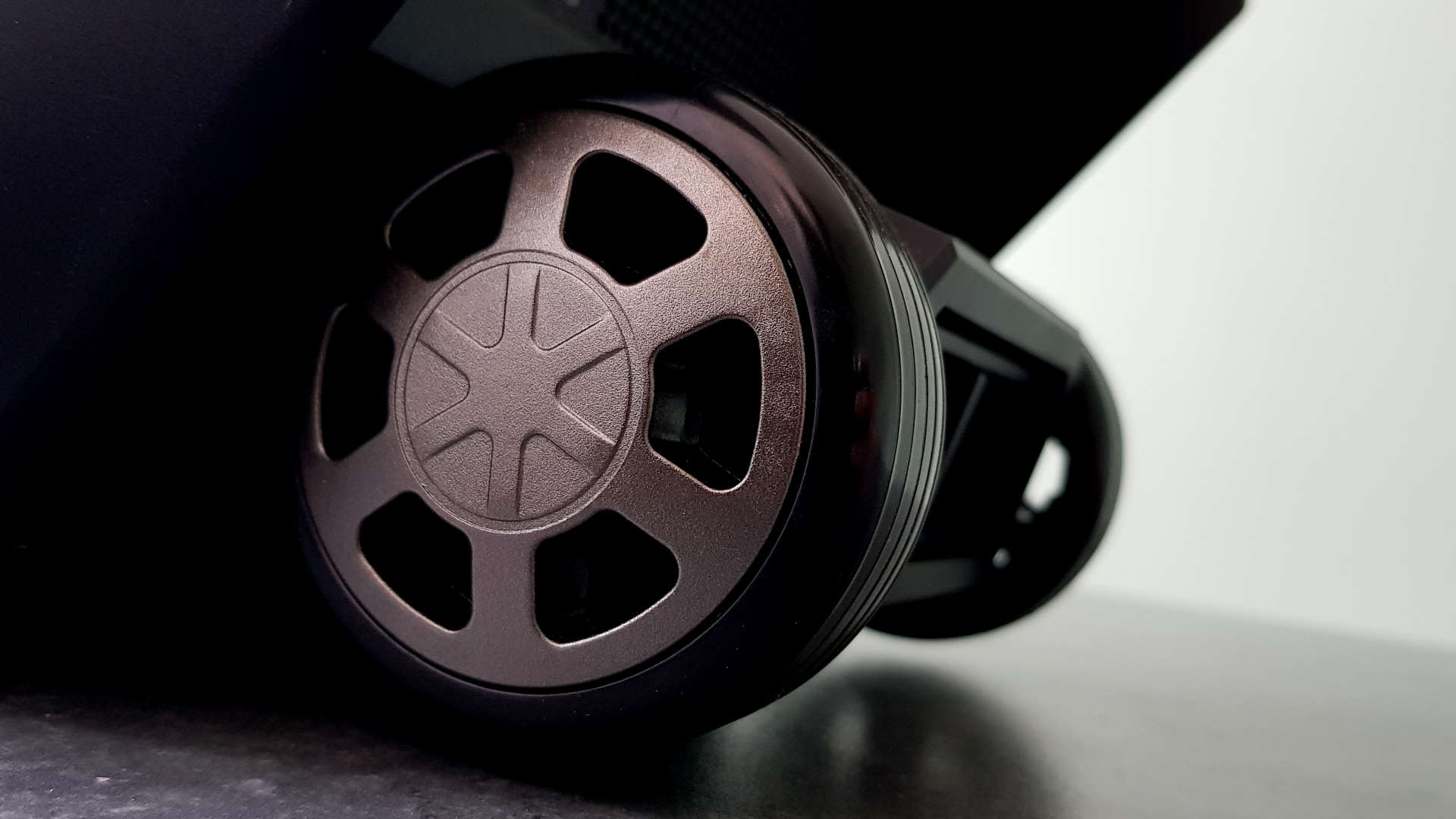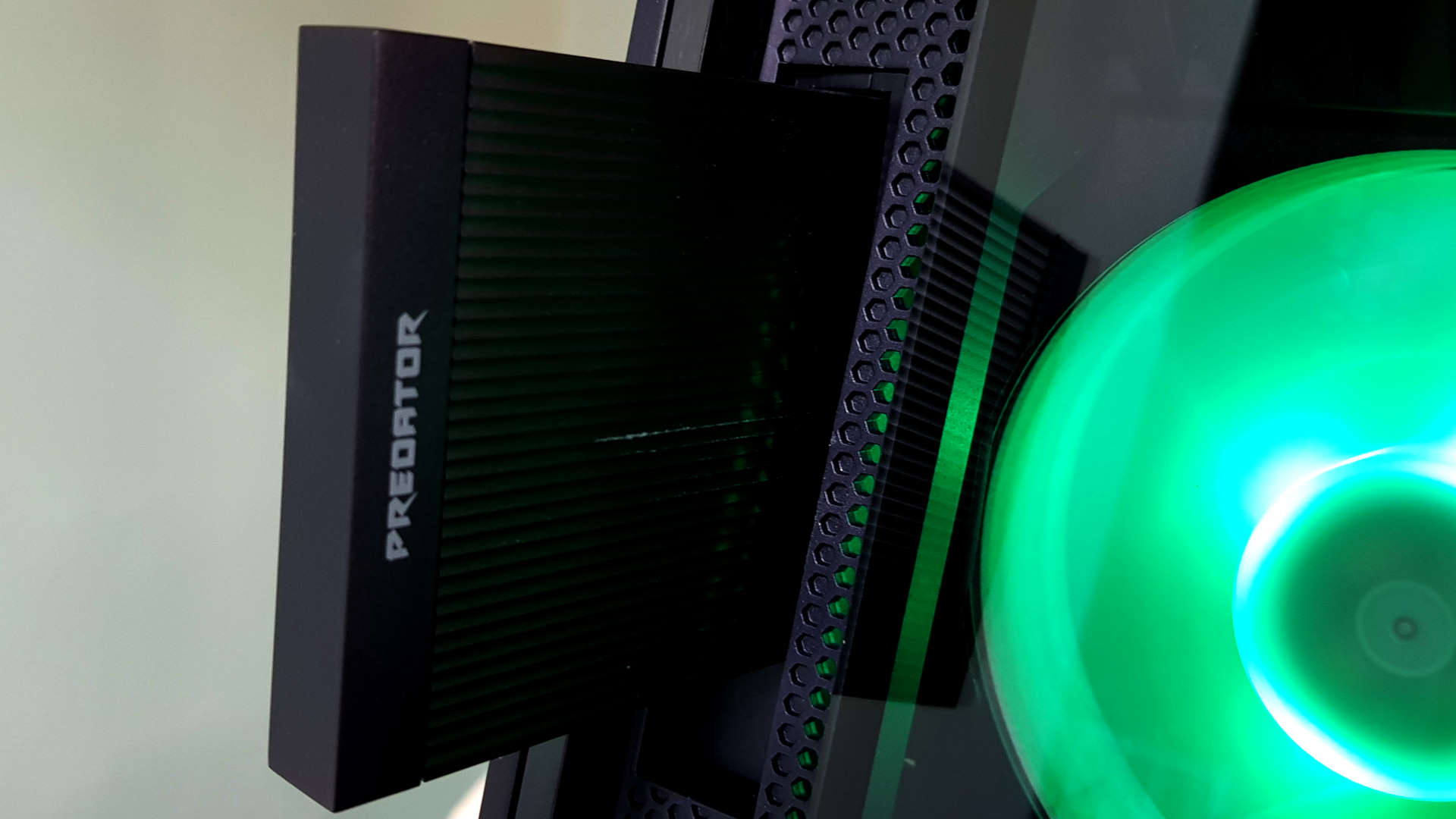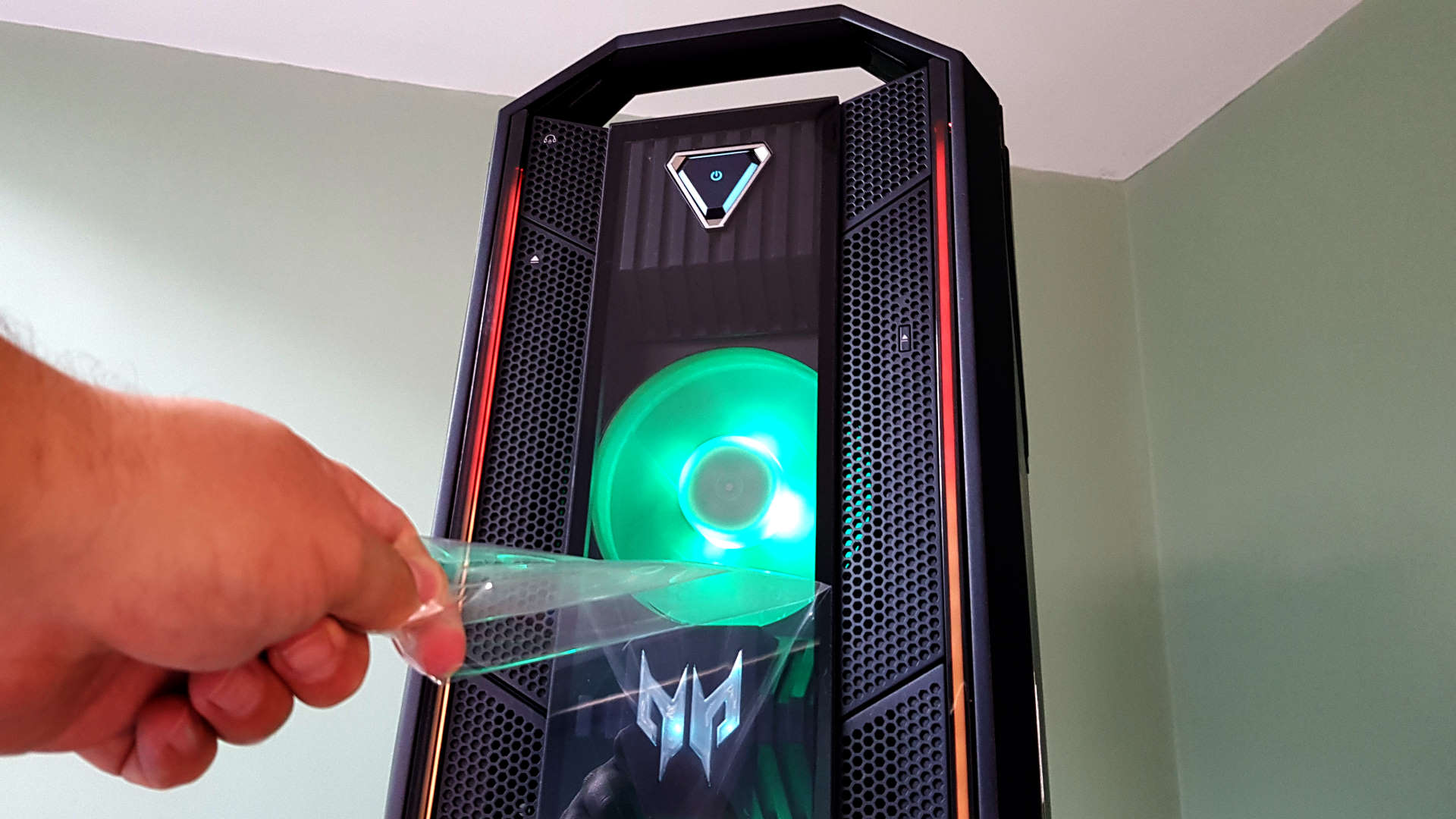Acer Predator Orion 9000 hands-on review: peeling off new PC plastic is still more satisfying than SLI
The new Predator Orion 9000 is a super-powered monster of a gaming PC, almost unnecessarily so...

The new Acer Predator Orion 9000 is a beast. An angular monster of a personal computer, with a borderline offensive array of componentry jammed inside its capacious innards. The latest model was announced at the Acer global press conference on Tuesday, alongside the Acer massage chair and energy drink, and the company shipped me an early marketing sample for a quick pre-launch check. Though honestly the real thrill was being the one to peel off the vast swathes of protective plastic from the tempered glass panels. Mmmm. So satisfying.
CPU - Intel Core i9 10980XE @ 3GHz
Graphics cards - 2x Nvidia RTX 2070 Super SLI
Memory - 64GB HyperX DDR4 @ 2,667MHz
Storage - 2TB SSD, 500GB hotswappable SSD
'Designed for hardcore and professional gamers' that's the tagline for this chunky desktop, but really it feels more like a workstation that's desperately trying to look cool in front of its peers. Even for 'hardcore and professional gamers' the kit inside the Predator Orion 9000 is overkill.
Exhibit A is the Intel Core i9 10980XE. That's an 18-core Extreme Edition CPU with a peak capacity of 36 threads of processing power, and if you can show me a game 'hardcore and professional gamers' play that will actually take advantage of that many cores and threads I'll show a hundred that don't.
It's also a touch limiting when it comes to clock speed, something that is arguably far more useful to gamers.
The impressive new all-in-one Cooler Master-built Predator liquid-cooling system is great, and keeps the beefy CPU relatively chilled—under full load I only saw a peak of 71°C from the 18-core chip—but still the Turbo Max 3.0 setup only gave us single-core peaks of 4.3 - 4.4GHz. A bunch of the far cheaper new 10th Gen Comet Lake chips, such as the 10-core, 20-thread Core i9 10900K, will go way further than that.
With the same graphics cards you'd get higher gaming performance from a much cheaper rig, and makes the i9 10980XE feel like a bit of an unnecessary component choice.

Though with Exhibit B being the twin Nvidia RTX 2070 Super cards, I'm going to make the same point about those. You can go all the way up to a pair of RTX 2080 Ti GPUs in SLI configuration if you're feeling particularly flush, but I'd say that was largely pointless too.
Keep up to date with the most important stories and the best deals, as picked by the PC Gamer team.
You see, multi-GPU gaming is toast.
It got so difficult for Nvidia and AMD to manage the different SLI and CrossFire profiles on a per-game basis that both teams have pretty much now given up. Every time we ask the question either company will respond with the onus now being on game developers to implement multi-GPU support via the different multi-adapter levels baked into the DirectX 12 API.
Unfortunately that requires extra dev time, effort, and therefore money. And for such a small niche of PC gaming it's just not worth it… and so that niche shrinks ever more. Add in the fact that only the high end GPUs have the option now on the Nvidia side and it becomes even more irrelevant for most of us.
Okay, I'm digressing here... but, when the promise of multi-GPU gaming was there, you could buy a mid-range GPU with the threat of high-end performance down the line. At least when prices dropped and you could afford to stick another one into your system. Those over-optimistic days went away a long time past, along with sensible forms of government and those super colourful old motherboards.
There are a few older games that have SLI profiles in them, and they will actually take advantage of the dual-GPU nature of the Orion 9000, such as Shadow of the Tomb Raider and F1 2019. On the 1080p, 240Hz Predator XB3 monitor Acer also shipped over, it averaged 145fps with the RTX 2070 Super pairing in the latest Tomb Raider. And that's with the peak of real-time ray traced shadows enabled. I got 156fps out of F1 2019.
So yeah, that's at 1080p, but still pretty effective frame rates, I'm sure you'll agree. But without an SLI profile in most games you lose a huge chunk of that potential performance as one GPU will just be spinning its fan doing nothing.
I could go on with Exhibit C being the installed 64GB of quad-channel memory, but I think you get the idea.


There are some very cool things about the Acer Predator Orion 9000, such as the way the storage is laid out to include one hot-swappable drive connected via USB 3.2, and the extending headphone hook. The Frostblade cooling array inside the Orion is also impressive—even at full chat the system remains remarkably quiet too. I mean, you could never call it unobtrusive, because it's so MASSIVE the chassis needs wheels, but it's certainly not loud.
Peeling off the plastic, however, was loud. That shielded glass side panel came with a super tight layer of plastic—which I'm only now hoping wasn't actually some special kind of material that's intrinsic to the EMI shielding—and it took a lot of effort to peel off.
But damn, it was satisfying. It's always nice to be the first to denude a desktop machine of its protective plastic, like when you start to peel after a long, hot summer and your skin starts coming off in swathes. Just me?
In some places I actually had to use both hands to peel away the covering, so tightly was it held onto by the tempered glass. But I was not to be deterred.




Still, the glorious experience of peeling the plastic aside—which is probably not worth the price tag alone—the Orion 9000 is an almost ludicrous machine. It's expensive, packed with unnecessarily pricey, high-end components, but is beautifully built and rather well laid out too. Essentially it's Acer's Alienware Area 51, but with a darkened, EMI-shielded tempered glass side panel for pretties.
I don't know exactly how much this particular specification of the new Acer Predator Orion 9000 will cost, but this fresh design will be available from October this year with a starting price of around $2,800. Considering the i9 10980XE is a $1,000 chip on its own, this build might be a little more.

Dave has been gaming since the days of Zaxxon and Lady Bug on the Colecovision, and code books for the Commodore Vic 20 (Death Race 2000!). He built his first gaming PC at the tender age of 16, and finally finished bug-fixing the Cyrix-based system around a year later. When he dropped it out of the window. He first started writing for Official PlayStation Magazine and Xbox World many decades ago, then moved onto PC Format full-time, then PC Gamer, TechRadar, and T3 among others. Now he's back, writing about the nightmarish graphics card market, CPUs with more cores than sense, gaming laptops hotter than the sun, and SSDs more capacious than a Cybertruck.

